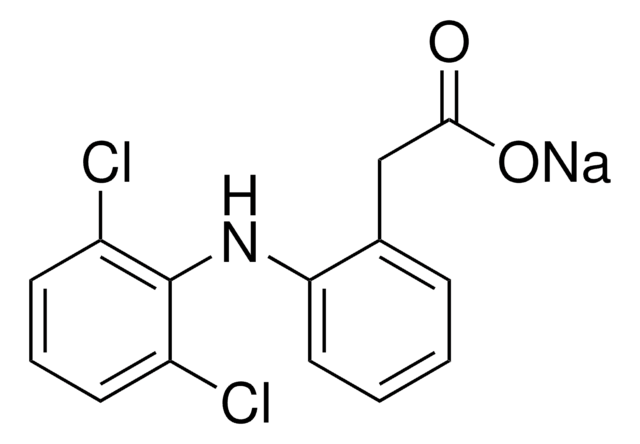Y0000167
Alcool benzilico
European Pharmacopoeia (EP) Reference Standard
Sinonimo/i:
Benzenmetanolo
About This Item
Prodotti consigliati
Grado
pharmaceutical primary standard
agenzia
EP Reference Standard
Densità del vapore
3.7 (vs air)
Tensione di vapore
13.3 mmHg ( 100 °C)
3.75 mmHg ( 77 °C)
Famiglia di API
benzalkonium chloride
Temp. autoaccensione
817 °F
Produttore/marchio commerciale
EDQM
Indice di rifrazione
n20/D 1.539 (lit.)
P. eboll.
203-205 °C (lit.)
Punto di fusione
−16-−13 °C (lit.)
Densità
1.045 g/mL at 25 °C (lit.)
applicazioni
pharmaceutical (small molecule)
Formato
neat
Temperatura di conservazione
2-8°C
Stringa SMILE
OCc1ccccc1
InChI
1S/C7H8O/c8-6-7-4-2-1-3-5-7/h1-5,8H,6H2
WVDDGKGOMKODPV-UHFFFAOYSA-N
Cerchi prodotti simili? Visita Guida al confronto tra prodotti
Descrizione generale
Applicazioni
Confezionamento
Altre note
Prodotti correlati
Avvertenze
Warning
Indicazioni di pericolo
Consigli di prudenza
Classi di pericolo
Acute Tox. 4 Inhalation - Acute Tox. 4 Oral - Eye Irrit. 2
Codice della classe di stoccaggio
10 - Combustible liquids
Classe di pericolosità dell'acqua (WGK)
WGK 1
Punto d’infiammabilità (°F)
213.8 °F - DIN 51758
Punto d’infiammabilità (°C)
101 °C - DIN 51758
Scegli una delle versioni più recenti:
Certificati d'analisi (COA)
Ci dispiace, ma al momento non ci sono COA disponibili online per questo prodotto.
Se ti serve aiuto, non esitare a contattarci Servizio Clienti
Possiedi già questo prodotto?
I documenti relativi ai prodotti acquistati recentemente sono disponibili nell’Archivio dei documenti.
I clienti hanno visto anche
Il team dei nostri ricercatori vanta grande esperienza in tutte le aree della ricerca quali Life Science, scienza dei materiali, sintesi chimica, cromatografia, discipline analitiche, ecc..
Contatta l'Assistenza Tecnica.







